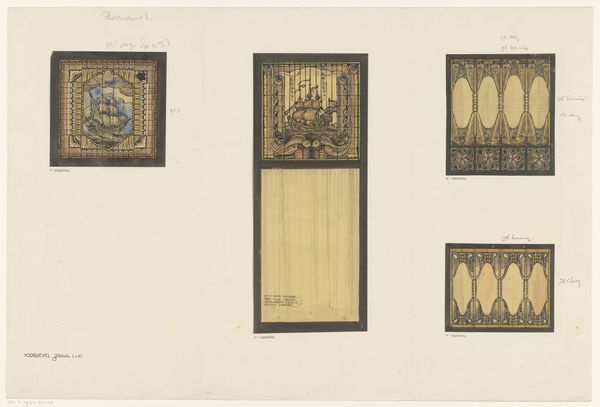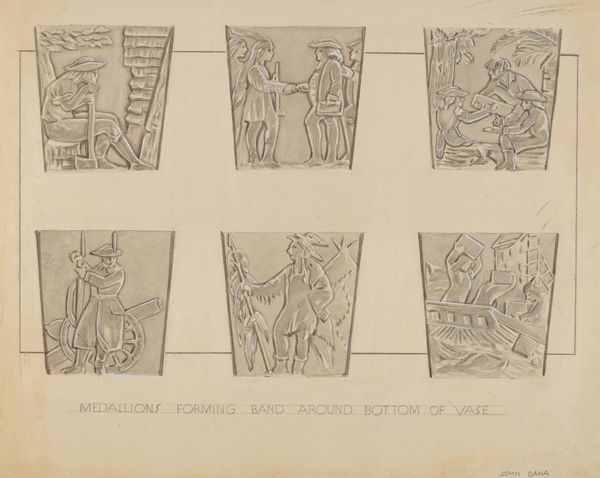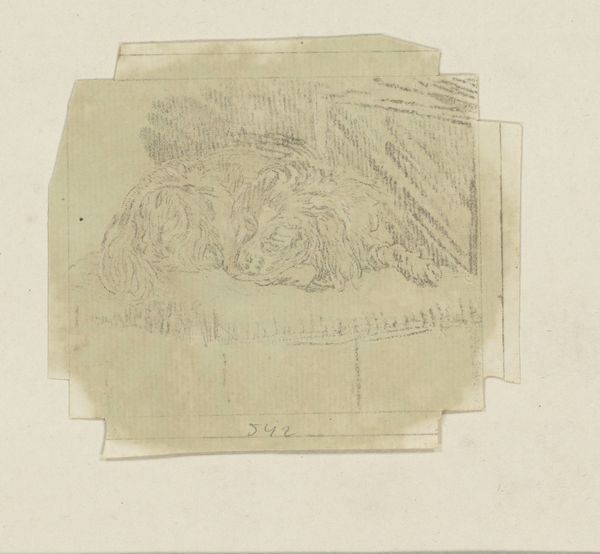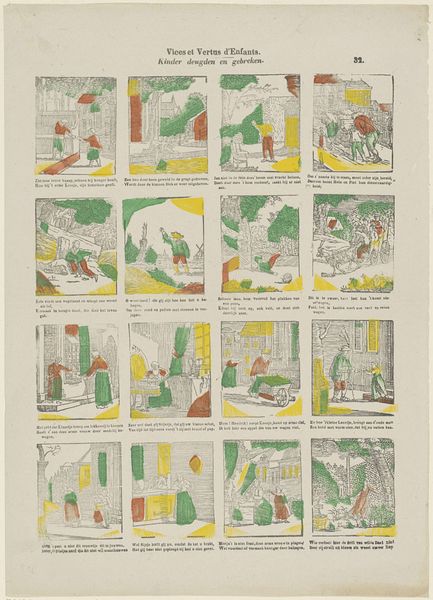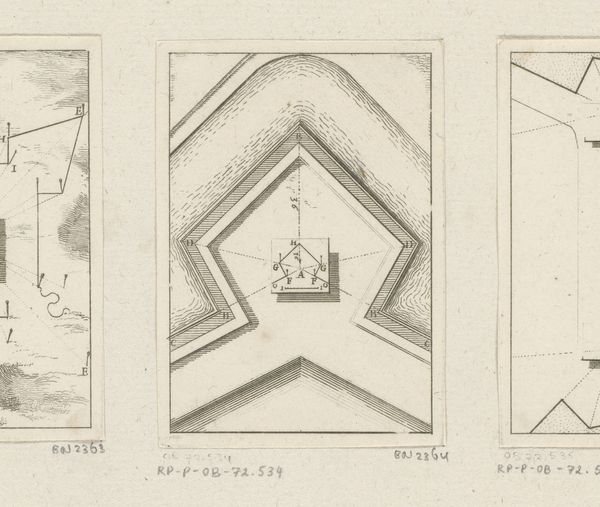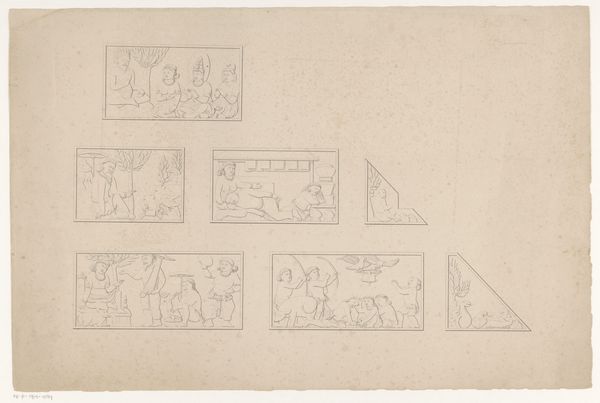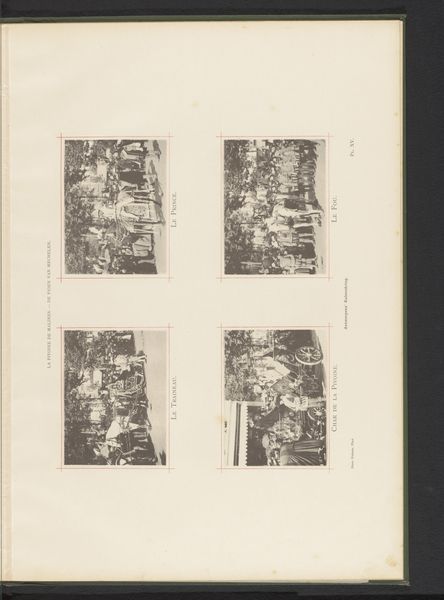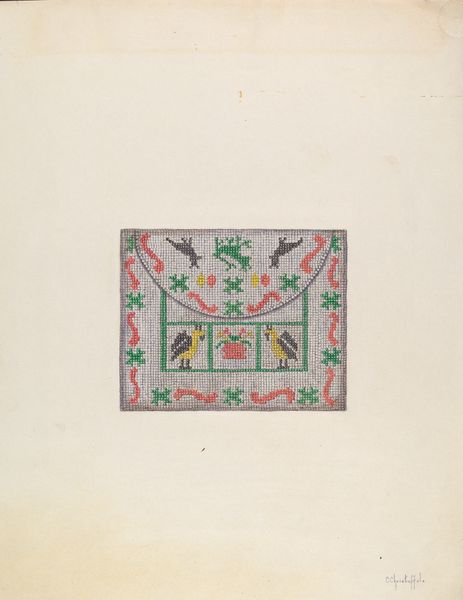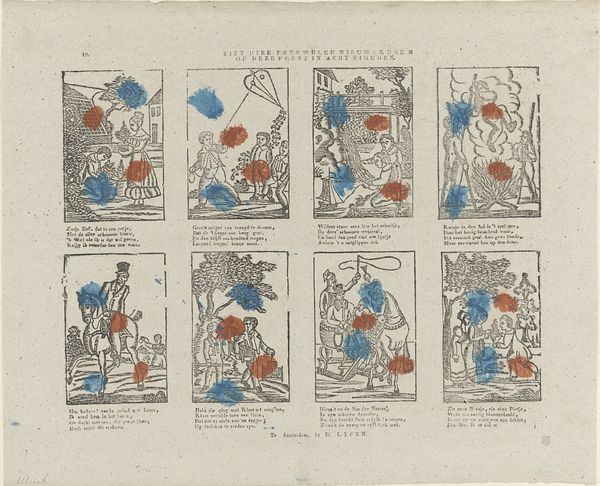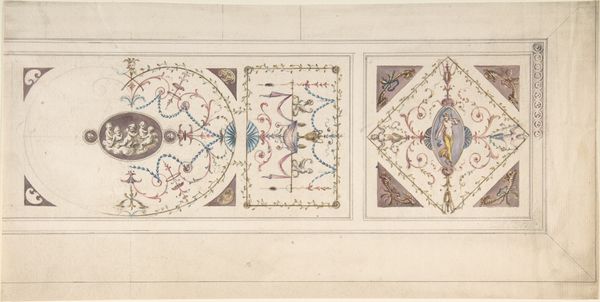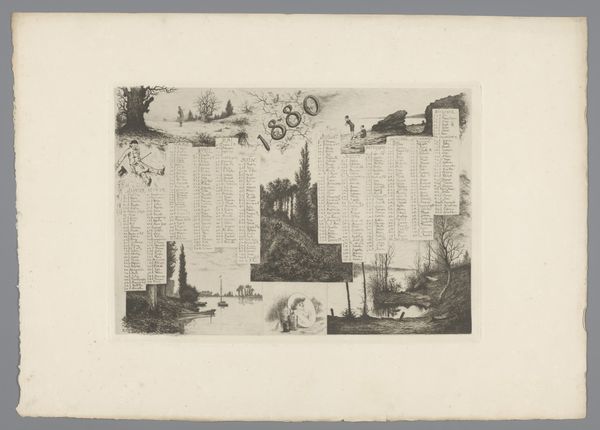
drawing, coloured-pencil, paper, watercolor, ink
#
drawing
#
coloured-pencil
#
narrative-art
#
paper
#
watercolor
#
ink
#
coloured pencil
#
watercolour illustration
#
genre-painting
Dimensions: height 166 mm, width 70 mm, height 121 mm, width 398 mm
Copyright: Rijks Museum: Open Domain
Curator: What a peculiar fragment. This narrative work, "Heylige Gènoveva," presents a story told through a series of small vignettes. P.J. Delhuvenne rendered these scenes between 1842 and 1856, employing watercolor, ink, and colored pencil on paper. What's your immediate impression? Editor: Well, aside from its incompleteness, the most striking thing is how delicately disturbing it is. It looks almost like a children's book, but with an unsettling, fragmented narrative hinting at something much darker than the gentle colors would suggest. It’s as if a comforting story is being whispered with a sinister undertone. Curator: The visual language certainly generates that tension. The division into discrete panels mimics the structure of early comics, where linearity and sequencing drive the narrative. However, the damaged nature of the artifact disrupts this intended legibility. The vibrant colors feel at odds with the disjointed story it suggests. Editor: Yes, and the palette is interesting too; there’s this consistent use of muted primary colors - red, green and yellow, that feel almost purposefully naive, as if seen through a child’s eyes, clashing violently with the narrative’s cryptic feel. It also feels strangely distanced; we see this narrative from so high up. The people depicted almost look like bugs. Curator: Precisely! This deliberate flattening of perspective further enhances the narrative's ambiguous status, distancing the viewer and abstracting figures into symbolic entities. Furthermore, Delhuvenne masterfully utilizes line quality to subtly convey emotional states and power dynamics within each vignette. It invites interpretations far exceeding its simplistic form. Editor: Absolutely! And that damage is interesting; you can even see some text accompanying the image in each of these little windows to another time and space, but that element of ruin almost gives it an aura – or reminds me that the meaning that remains is the real thing – this thing we now get to experience, that others, perhaps, were never meant to see. It reminds me a little of these Japanese concepts surrounding destruction, ruin, and entropy, even, like wabi-sabi. I mean, to be perfectly frank, the damage here almost adds something unique. Curator: That's an astute observation! The entropy you describe complicates our viewing and imbues the artifact with unexpected depth. What seemed simple initially now pulsates with narrative, material, and historical complexities. Editor: I completely agree. The delicate combination of those simplistic forms and colors gives it the potential to reach forward.
Comments
No comments
Be the first to comment and join the conversation on the ultimate creative platform.
